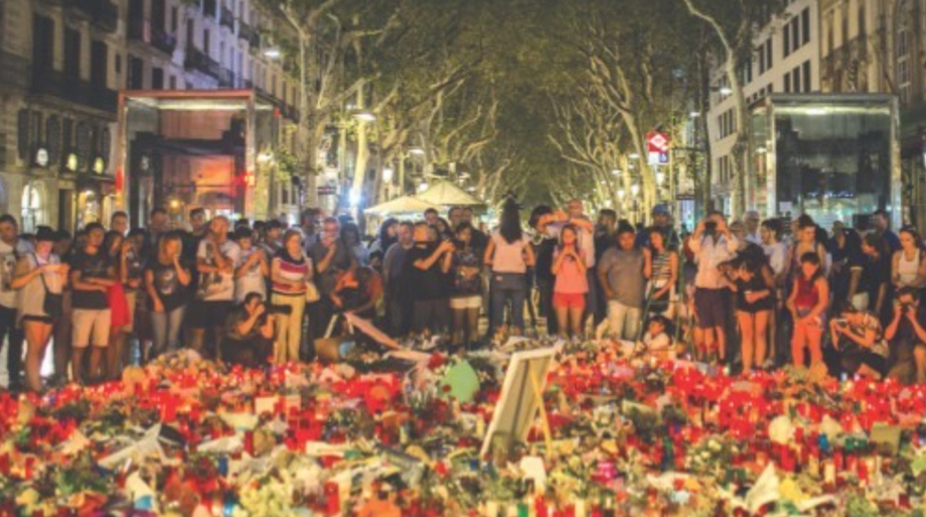Given that Barcelona is among the most popular tourist destinations in Europe, it is hardly surprising that almost all victims of last Thursday’s terrorist rampage came from different parts of the world.
The murderous intent, as is usual in such cases, was indiscriminate. Precisely what motivated the young Muslims, several of them still in their teens, to participate in the gory plot is open to conjecture, although it is probably safe to assume that a profoundly misguided view of religious obligations was a part of the mix.
Advertisement
News reports suggest they were radicalised by a Salafist imam – who, like the terrorists, was of Moroccan origin, and died in the massive explosion in Alcanar when gas canisters stored for the purpose of staging a more explosive attack thankfully blew up prematurely.
Apparently, the intended target was the Sagrada Familia church, the most prominent example of Antonio Gaudi’s quirky architecture in a city delightfully peppered with examples of his unorthodox designs. The resort to a vehicle as an instrument of terrorism – along the lines of attacks in France, Germany and Britain – seems to have been Plan B. And although even a single life lost in such horrifying instances is one too many, the toll, dreadful as it was, could have been much worse.
Much the same could be said about the violence in Charlottesville, Virginia the previous weekend, where a radicalised young man targeted anti-fascist protesters by driving a car into them and killing Heather Heyer, a legal assistant. She was among those who rallied to oppose the Unite the Right demonstration organised by a panoply of racist groups, ostensibly to oppose the local government’s decision to remove a statue of Confederate general Robert E. Lee that had been put up in 1924, almost 60 years after the South had lost its right to perpetuate slavery.
The American Civil War ended in 1865, but the struggle to clarify its legacy goes on. The period known as Reconstruction was relatively short-lived. It wasn’t until a century after Abraham Lincoln’s Emancipation Proclamation that voting rights and other constitutional guarantees of equality for African Americans were ensconced in law.
Even so, the white supremacists have sporadically resurfaced. They were suitably impressed by Donald Trump’s efforts, long before he became a presidential candidate, to insinuate that anyone called Barack Hussein Obama could hardly be American.
They were even more enthused when candidate Trump articulated slurs against Mexicans and declared he would institute a ban on Muslims entering the US. After Charlottesville, he was quiet for a while, then announced he saw little difference between the neo-Nazis and their opponents. He was subsequently persuaded to be more clear-cut in his denunciation of racists, but thereafter returned to his original formulation, declaring that there were “many fine people” on both sides.
The president may have felt flattered because some of the far-right demonstrators wore ‘Make America Great Again’ caps, never mind that many of them were echoing the ‘blood and soil’ slogans of the German Nazis amid considerable evidence of distinctly anti- Semitic vibes. His ambiguity spurred a backlash from leading lights of the Republican Party as well as the captains of industry, which flowed into the West Wing disarray that has crippled the White House.
The announcement of a ‘new’ strategy for Afghanistan (and Pakistan) was at least partially an attempt to restore presidential authority, presaging increased participation in an essentially unwinnable war. But the darkness that simultaneously crept across the continental US, courtesy of a complete solar eclipse, was perhaps a better metaphor for its current woes at home and abroad.
Writing recently in The Guardian, Jason Burke drew appropriate parallels between the Islamist and American nationalist varieties of the far right, with- out claiming equivalence. It is perfectly true that those determined to spread hatred prey on vulnerable young minds and channel their grievances towards antagonism against ‘the other’, invariably those of a different religion, race or ethnicity. Wherever this attempt succeeds, the consequences tend to be horrendous.
At the most basic level, such tendencies derive from a refusal to recognise the common humanity we all share. In the narrative of the Islamists, anyone not fundamentally wedded to a heinous interpretation of the faith is fair game. Among American nationalists, the enemies range from people of colour to Jews and ‘communists’, a list that has not changed a great deal since the resurgence in far-right tendencies after the Second World War, amid open references to “finishing Hitler’s work”.
Back then, Harry Truman, who ushered in the American security state, baulked from taking action against African American lynchings. But neither he nor his successors in the White House, regardless of how far to the right they leaned or how shamelessly they dog-whistled, publicly declared neo- Nazis to be “very fine people”. The shift is both telling and ominous.
















